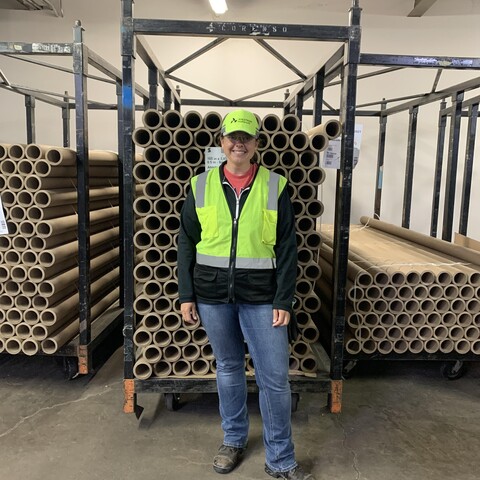Safety is our Mindset Serves as Paper Industry Employee Safety Motto

Safety is more than a goal for the paper and wood products industry - it’s a mindset. The people who develop, implement and monitor safety programs to help keep our employees safe are a key component to achieving “Goal Zero.”
Heather Stein works at Ahlstrom-Munksjö’s Mosinee Plant in Wisconsin as a safety manager. Her driving force every day is sending each of her colleagues home to their loved ones in the same condition or better than when they came to work.
“The paper industry has a highly skilled workforce that is required to complete some safety-intense tasks each day,” Stein said. “This helps to reinforce the motto ‘live, work, play safe.’ We live, work and play safe, every day, so that we can continue to participate in the activities we are passionate about with our families.”
The papermaking process is complex and has a unique set of safety risks throughout. It is one of the reasons Stein believes our industry must be a leader in safety, which sometimes means thinking outside the box and challenging longstanding beliefs.
“I think the biggest changes have been an overall culture shift, and improvements around ergonomics. We have had to make changes away from the thought process of ‘we’ve done it this way for years’ to maintain a competitive place in the ever-changing industry while staying safe,” she said.
When the COVID-19 pandemic presented challenges, thinking outside the box about safety became critical. Something as basic as providing on the job training needed to be revamped for social distancing, as well as providing safe, cool areas for employees to take breaks.
“At the start of the pandemic, we had to create new protocols in a matter of days, and those protocols regularly changed as we learned more about the virus,” Stein said. “However, it taught us that we have the ability to react rapidly and keep team members safe no matter what the challenge.”
There’s one thing the COVID-19 pandemic and day-to-day safety protocols have in common and that’s a continued cultivation of a safety culture. It’s also how the industry continues to strive for a “Goal Zero” industry.
“I believe hazard recognition is the key to continually achieving zero incidents. Complacency is an easy trap to fall into after you have worked a job for a length of time,” Stein said.
The mindset of safety culture is all about people.
“Employee engagement and involvement is a driving force in the success of safety programs. It takes everyone working towards the same common goal to be able to achieve the goal of zero incidents,” Stein said.
